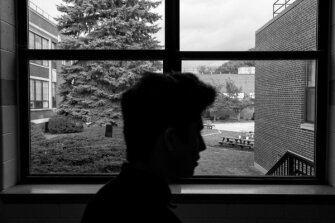This post is by Kathleen Cushman. Her most recent book, with WKCD colleague Barbara Cervone, is Belonging and Becoming: The Power of Social and Emotional Learning in High Schools(Harvard Education Press).
Back in the 1980s, when I first started writing about teaching and learning in the adolescent years, Theodore R. Sizer advocated for powerful cross-disciplinary questions to drive curriculum and instruction.
As his Coalition of Essential Schools flourished in the decades that followed, Sizer--along with the late Grant Wiggins, its earliest research director--pushed our thinking deeper with those “essential questions.”
Three decades later, many educators use essential questions as a fundamental way to structure deeper inquiry by both youth and adults in schools. Grant Wiggins and Jay McTighe contributed notably to this when they created the admirable body of work known as Understanding by Design.
Rooted in dilemmas that matter to us all, essential questions fuel our desire to know more, exploring in ways both personal and academic. Instead of thinking of school subjects as silos of facts, they cut across academic domains to help us find common intellectual ground.
In this wrenching era, the rising generation is entering political, social, and intellectual adulthood submerged in an incessant tide of questionable “information.” As young people see their cultures disrespected and their futures undermined, many have good cause for alienation, apathy, and anxiety. Could powerful essential questions help them instead dig deeper into the vital issues of our time, engaging them with clarity and courage?
Perhaps the three questions below will prime the pump. You’ll have your own --and I hope you’ll share them in the comments below.
1. “Where is my bias?”
In math, science, social studies, or the arts and humanities, this essential question can help students discover important intellectual perspectives and insights. And as a social and emotional prompt--perhaps in morning meeting or advisory group--it provides a personal, and equitable, way for them to engage in difficult conversations.
For teachers and school leaders, Shane Safir, author of The Listening Leader, raises the question by reflecting on “implicit bias.” Her resource list offers eight compelling media examples as discussion-starters for youth or adults.
Teachers at the June Jordan School for Equity in San Francisco (which Safir co-founded) and at Envision Academy in Oakland spoke eloquently to me of how the “warm demander” stance combats such bias regarding students’ aspirations and trajectories. And Safir remarks on educators’ common use of the Spanish word pobrecito (“poor little one”) to refer to students who are struggling academically or emotionally. Instead of “feeling sorry” for them, she suggests going “beyond grit” to convey a warm “You got this” that supports them toward their goal.

2. “Where have we seen this before?”
My own 18th birthday coincided with the Tet Offensive, where my father fought fiercely. He left his seven children in order to spend four years in Vietnam, during which we kids struggled with competing political and familial narratives. I found a way through as a history teacher asked, “Where have we seen this before?” and complicated my understanding of that devastating war.
That same question could take one’s learning deeper in many fields, from the arts and humanities to scientific investigation. But it could also invite timely research and reflection regarding present-day politics and economics.
For example, students could consider America’s efforts to export its ideals, either political (as in Iraq) or financial (as in the 2008 recession). Or they might research the 1989 fall of the Berlin Wall, and the post-millennium failure of democracies that included Russia, Turkey, and Hungary. Or they could trace the social and political effects of globalization and automation on the middle classes in the Western world. “Where have we seen this before?” Would the multiple answers help us through our troubled times?
3. “Where can we go from here?”
Perhaps this question--which emerged from the two above--will hold most power for youth. Which present crisis will grip them so personally that they turn to action? Which crisis in the past might offer new perspectives or insights--and perhaps hope?
Factory girls, students may discover, played a formidable role in mass walkouts in the Progressive Era. In our digital times, they might shape new solutions as they investigate the mathematical power of networks, whether in brain science, epidemics, finance, or voting.
The most important issues of our time will directly affect our students’ futures. The intellectual and creative challenge of making their own case--through scientific research or the arts, by writing or speaking or political organizing--could lead to a personal stake in “going deep” with this essential question for our times.
How might you use--or revise--these questions to deepen what you teach? What questions might you substitute, or add?
Photograph by Nick Whalen